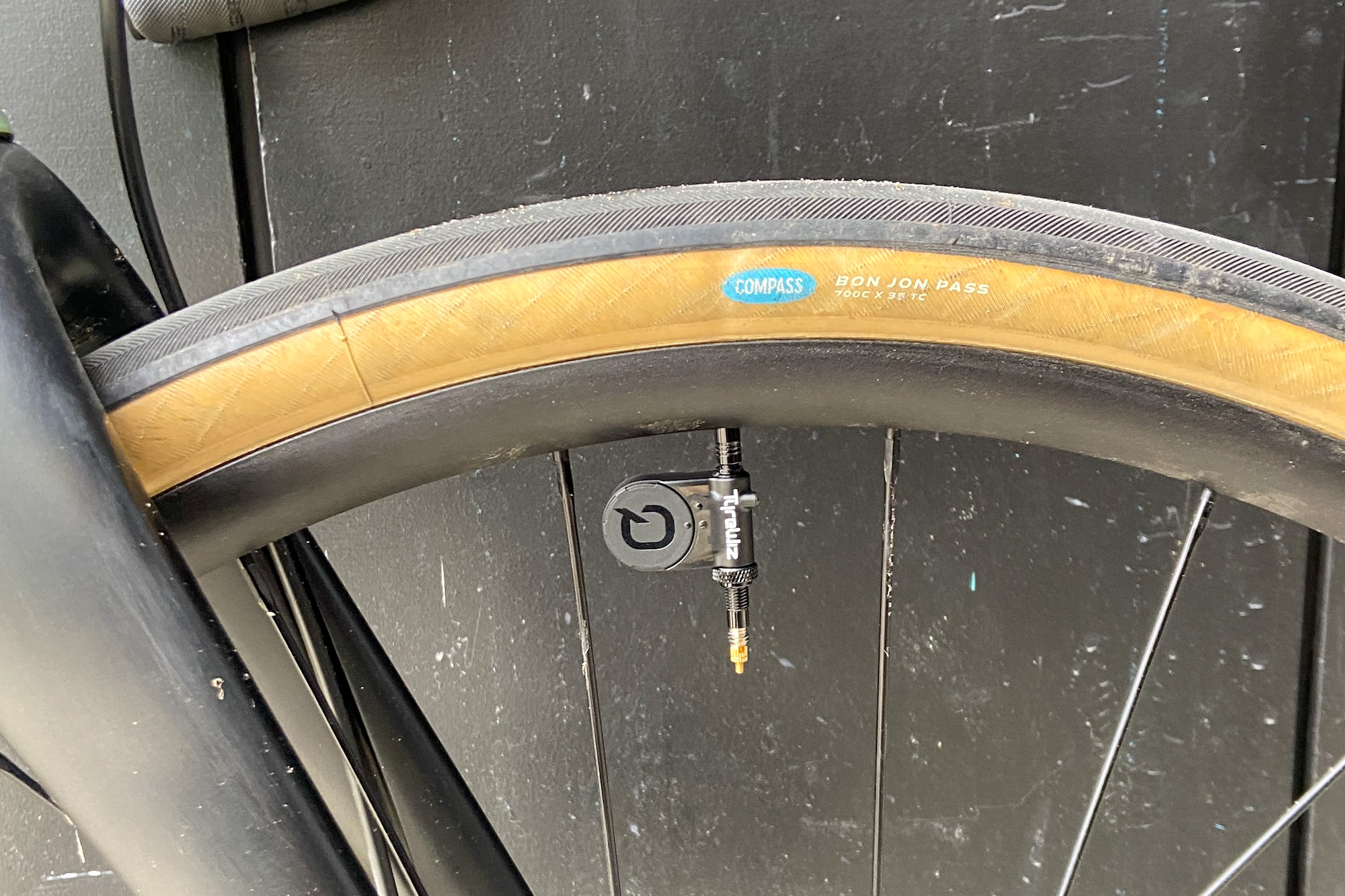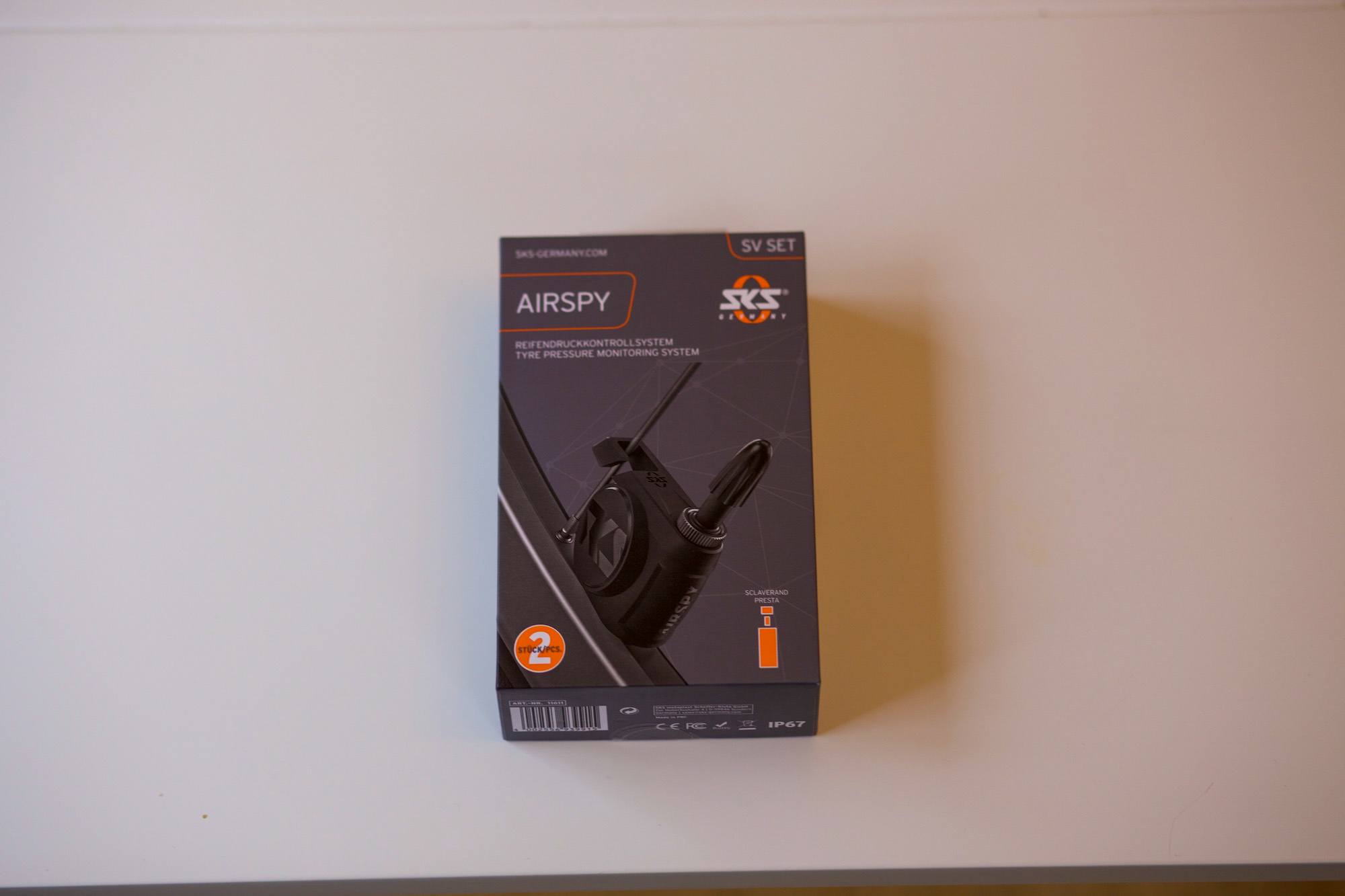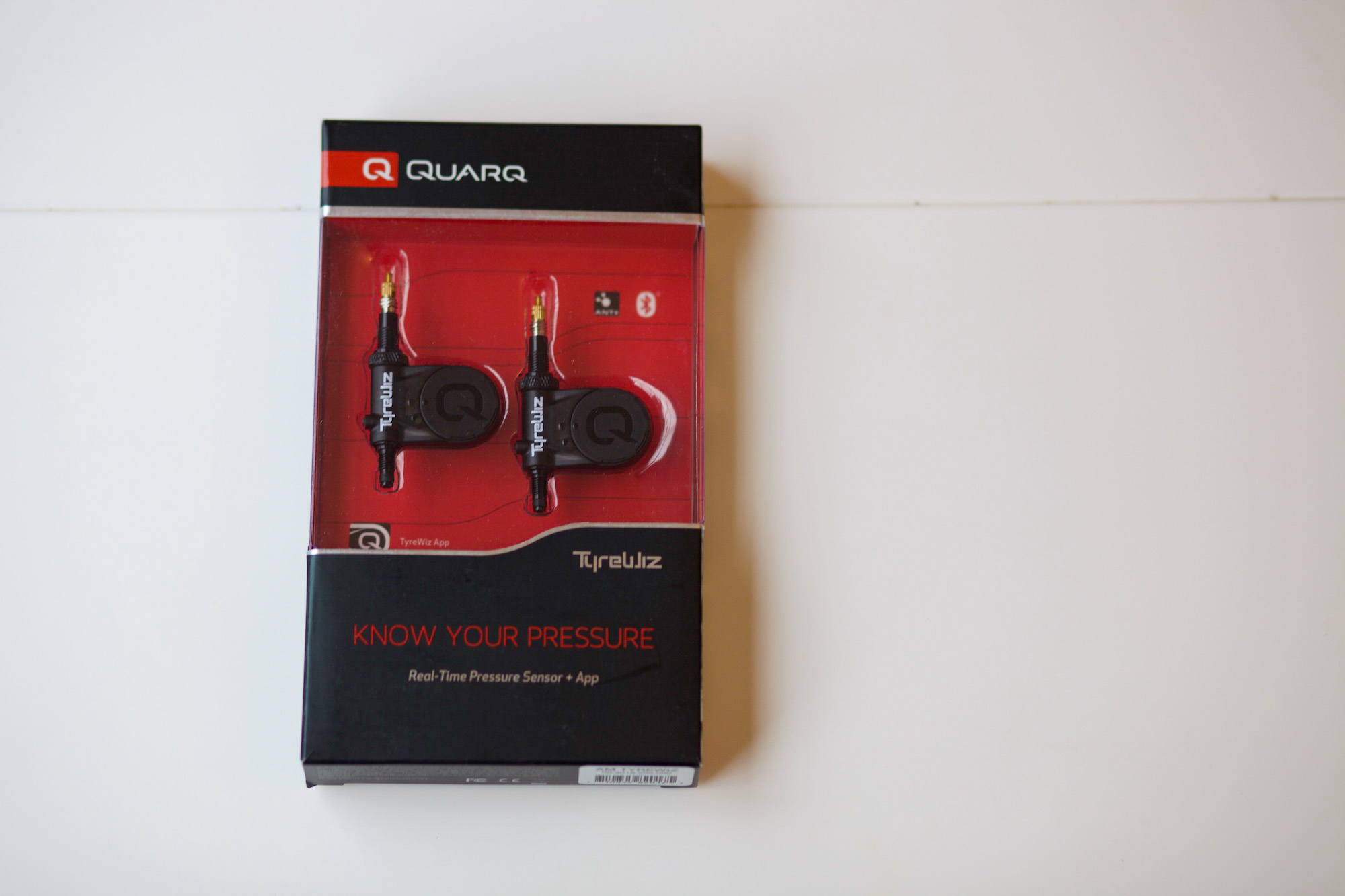What pressure are you running? Three different pressure monitoring systems, put to the test
Real-time pressure sensors allow you to test your own tire pressures to go faster, be more comfortable, and get fewer flats


Sports science in cycling has reached a golden age. Advancements in aerodynamics are rewriting the rulebooks (see: the ongoing aero helmet spat currently unfolding in professional cycling), as well as changing race tactics. Old rules of thumb about how much time a peloton could give a breakaway are being mooted by crafty racers using tuned aerodynamic strategies as part of their arsenal, and race speeds continue to go up and up.
Tied to this battle for speed is the increased attention given to rolling resistance, specifically, trying to lessen its impact. When it comes to tires, the prevailing wisdom used to be that narrow is fastest, but that’s gone out the window. It’s now known that, especially in races with rough surfaces, wider tires at lower pressures provide a speed advantage. There are other benefits too: increased comfort (which means less fatigue), better grip, and decreased likelihood of puncture.
For races like Paris-Roubaix, tire pressures can be a closely guarded secret that team mechanics go to great pains to maintain. In the last few years we’ve seen multiple products that adjust tire pressure on the fly to optimize pressure for the conditions the riders face. Roubaix has long been a proving ground for new technology, and more often than not these innovations don’t last, but there are always lessons to be learned. For everyday cyclists, figuring out what pressures work for you takes some trial and error. Individual preference is part of the equation: some people like the consistency of a firmer pressure, while others like the floating feeling offered by slightly less air. Tubeless tires and rims have made a wider range of pressures viable, though there are still limits on both ends of the spectrum.
How low is too low?

How does one ascertain the optimal pressure? Online pressure calculators like the one Silca and others have developed provide a good jumping off point. By inputting your weight, wheel size, tire width and surface conditions, you can get a good idea of what will provide the best blend of grip, comfort and rolling resistance.
But there may be additional factors that are pertinent to you, and this is where tire pressure monitoring systems come into play. By using tools like these, you can accurately experiment with different pressures, and crucially, replicate these results over and over again.
The main premise behind these systems is to make it easier to maintain optimal pressures while riding. You can also enable alerts to remind you if your tire pressure gets too low. For riders who frequently forget to check before they head out the door, this may be a helpful feature.

SKS’s Airspy system uses a battery-powered sensor attached to a valve stem extender. The entire apparatus threads onto an existing valve (versions for both Presta and Schrader are available) and connects with an app or a Garmin bike computer to relay real time pressure. Included in the package are several different sized brackets to connect the sensor to the closest spoke, which SKS bills as an anti-theft precaution, but also helps to stabilize the sensor unit.
I was unable to decipher the included directions, so decamped to YouTube where I located a video tutorial from SKS. Once I made sense of it all, it was very easy to get up and running: after letting the air out, the sensor threads directly onto the valve. The bracket sits on top of the sensor and hooks around a spoke. No tools are needed for installation—in fact, SKS specifically cautions against tool use as too much torque could damage the sensor. Batteries are included as well, though I found the battery covers to be fiddly. I would appreciate having markings of some kind to help line up the cover during reinstallation.
The Airspy tool has its own place on the homepage of the SKS app and provides readouts for both front and rear tire pressures. Connecting the sensors to the app was easy enough, though the ID numbers are on the bottom of the sensor so you can’t read them easily once they’ve been installed. SKS also has a tire pressure calculator as part of its app, though I found its suggested pressures to be much too high.
On the bike, the sensors performed as expected. Pressures quickly popped up when I opened the app, and provided consistent readings throughout the ride. My tire pressure dropped 4-5 psi from indoor temps (70 degrees F) to outdoor temps (45 degrees F). I didn’t experience any alerts during testing. The apparatus is unnoticeable on the road: when installed correctly there is no rattling. I’m not sure the bracket clip will work with every spoke type out there, but the design was compatible with all of the wheels I tested it on. Functionality is very good, but it seems like the size of the sensor and bracket could be further pared down a bit so that the whole product is more streamlined and lighter. Of the three systems tested, this one as the easiest to use and had the fewest peculiarities.
Weight: 21 grams per wheel
Cost: $167 for a set of two sensors
Website: sks-us.com, sks-germany.com
Pros
- Works with any valve
- Reliable
Cons
- Bulky
- Expensive

Tubolito has made a name for itself producing extremely lightweight TPU tubes for a wide variety of sizes and applications. The company has recently developed a pressure-sensing system within a TPU tube, by enclosing a small NFC chip near the valve. The chip senses the pressure within the tube and then relays it to a smartphone app. It requires no batteries and adds only a small amount of weight. The chip is roughly an inch and a half long and has light padding around it for protection.
Installation is exactly the same as putting a regular tube into a tire. At the moment Tubolito only makes its PSENS chip-enabled tubes for mountain bikes (the tube is compatible with both 27.5 and 29 inch tires), though I ran them on my gravel bike without issue. I suspect that at the moment the chips are just too large to fit into smaller tubes, but Tubolito says it has plans to offer additional sizes in the future.
If the thought of using a tube on your mountain or gravel bikes seems anathema to you, you’re not alone. Very few riders are using tubes on dedicated off road bikes these days. Even for the purposes of experimentation, it’s a hassle to need to clean out sealant and remove valves to swap back to tubes on a dedicated tubeless setup.
Tubolito’s app has just one feature. Once downloaded, it prompts you to hold your phone near to the PSENS tube and then spits out the pressure in both Bar and PSI. That is the full extent of it. It’s critical to hold your phone right against the tire for it to connect, and I frequently received an error message that something went wrong. It would be nice for Tubolito to include some additional instructions as part of the app as well as provide advice for troubleshooting issues.
I was able to check pressure mid ride using Tubolito’s app without issue, and monitored changes as I was riding. However, the fact that you need to place the phone right next to the tire to read the chip was tedious, as was the fact that you can only check one at a time. The NFC chip concept shows promise as a simple and lightweight way to relay information, but encasing it in a tube limits the real world use significantly. Putting a similar chip directly into a tire and increasing its connectivity would make it much more useful.
Weight: 85 grams per tube with built in NFC chip
Cost: $50 per tube
Website: tubolito.com
Pros
- Relatively affordable
Cons
- Requires use of a tube
- Only one size currently available

Similar to SKS’s system, Quarq’s TyreWiz uses a battery-powered sensor attached to a valve extender. The pressure sensor can then be wirelessly connected with a smartphone or bike computer. Installation requires first deflating the tire, then removing the valve core on the bike and threading the TyreWiz into the valve stem. It works with any valve with a replaceable core whether tubeless or tubed. Once installed, the sensor pairs directly with SRAM’s AXS app. Included in the package is a valve core tool.
Since SRAM’s app supports many products, it’s well-designed and fully featured. The TyreWiz(s) pop up quickly for pairing and the app gives the option to tie them to a specific bike. It also allows you to input a target pressure, as well as high and low limits around it. Should you exceed those limits, the sensor’s LED lights will change from green (within target range) to red. The app also provides pressure suggestions.
I set everything up initially and was able to get an accurate reading, then went riding. On the road I ran into some issues: the sensor has to reconnect each time you open the app and sometimes it gets confused. When I stopped to look at my pressure on the first test ride the sensor wasn’t reading accurately. I suspect the battery may have been low, as I didn’t run into any issues with the other sensor on subsequent rides.
On the bike the unit is unobtrusive and seems well-attached to the bike. While you’re riding, you can’t easily see it, though it looks a bit funny in profile. Like the SKS unit, I found the battery cover to be a bit fiddly. I always seem to end up dropping these tiny little covers on the floor and they become impossible to see. Alas.
Of the three systems, SRAM’s is by far the most expensive. It does seem to be extremely accurate, when it works, but I did have some issues with connectivity on the bike. It would be great to see this design streamlined even further. I am concerned about long-term durability with this design as it’s only connected to the bike via a threaded valve core. It seems like any minor impact or even some particularly tenacious mud would knock one of these sensors out of commission.
Weight: 11 grams per wheel
Cost: $214
Website: sram.com
Pros
- Very accurate
- Lightweight
Cons
- Peculiar looking
- Expensive
Conclusion

It was interesting to test these three products together. All of them work more or less as advertised, and though they use different means to get there, the end result is the same: real time, accurate tire pressures. One of the biggest differences between the three was the functionality of the associated apps. Each one has a different interface and set of features available: SKS and Quarq have larger apps useful for many different products, while Tubolito’s app is about as rudimentary as it gets.
Tubolito’s concept shows promise, but needs further refinement to become as usable as the other two systems and its appeal is limited by being built into a tube. The SKS Airspy is easy to use and feels reliable, though would benefit from being made more compact. Quarq’s TyreWiz boasts impressive accuracy, but its design leaves it vulnerable and it is the most expensive option of the three.
I’m glad these products exist, but realistically I don’t think there’s a massive amount of demand. Yes, tire pressure is worth paying attention to, and optimizing your pressures will help you go faster and be more comfortable, but very few riders (except perhaps professional cyclists) need to know if the tires they’re riding on are at 60 PSI or 61 PSI. In the ballpark is plenty close enough, and there are handheld gauges that will get you there for significantly cheaper than the pressure monitors tested here.
Through my testing, I was surprised to learn just how much air latex tubes can lose in 24 hours. It’s significant: I experienced up to 6 PSI lost just overnight. TPU tubes and tubeless tires lose very little in comparison. I also was reminded that pressure gauges attached to floor pumps or air compressors might be consistent in their readings, but are usually not very accurate.
If you want to experiment with different pressures in order to find your optimal set up, these tools will help make that easier. I don’t know if that alone can justify the cost. The built in alert systems that let you know if your pressure is off may be helpful for some people, but it’s hard to argue that such a feature is worth the asking price.
The latest race content, interviews, features, reviews and expert buying guides, direct to your inbox!

Tyler Boucher is a former (and occasionally still) bike racer across several disciplines. These days, he spends most of his time in the saddle piloting his children around in a cargo bike. His writing has appeared in magazines published in Europe, the UK and North America. He lives in Seattle, Washington.